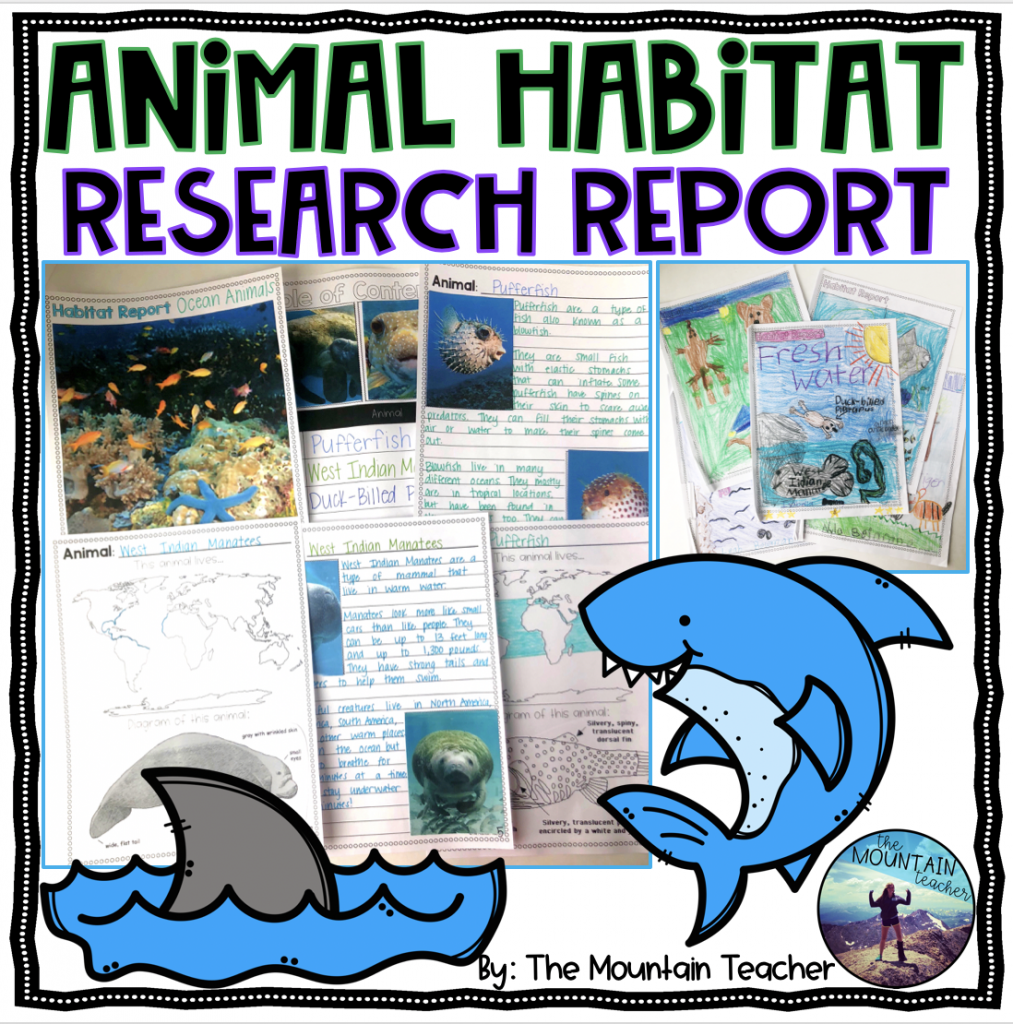The Ultimate Life Science Unit for 2nd Grade
Stuck on how to link together all of your life science topics in a way that is engaging to students and is NOT simply talking at them? We spend about three to four weeks researching, taking notes and doing STEM activities on life science, and the kiddos absolutely love it.
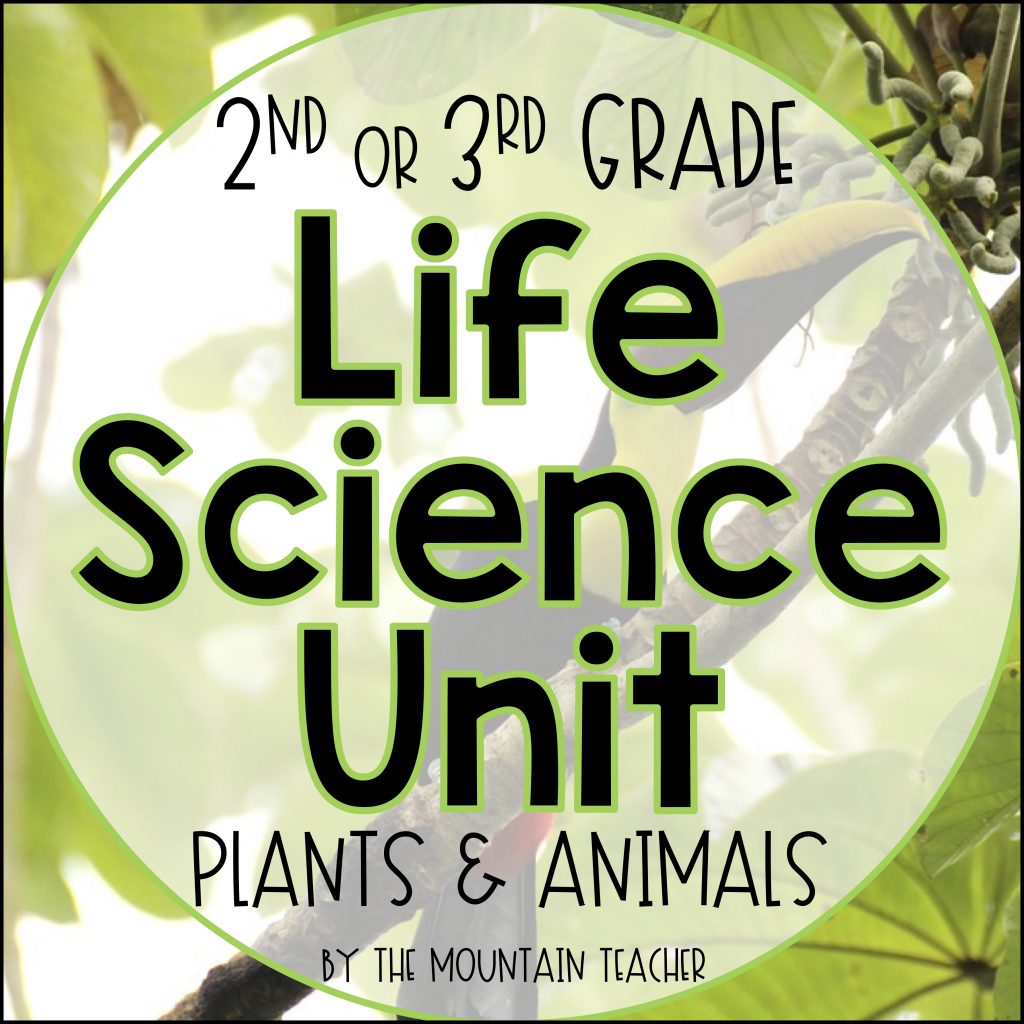
Weeks 1-2: How do habitats differ?
We begin by going over a list of habitats we have heard of, important vocabulary and with guided discovery of different habitat books. I love to check out as many books on habitats as I can from the library, and also to use Epic‘s habitat collections to help my kiddos explore these books.
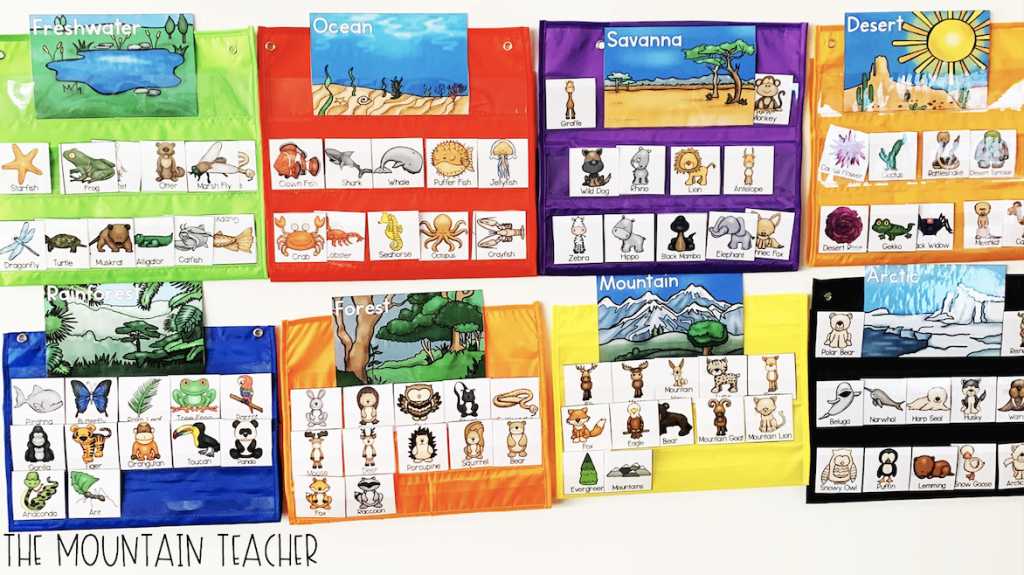
Once students are familiar with the habitats, we talk about what a non-living vs. living component would be. We then work in groups to sort out living things from similar habitats. We talk about what adaptations or traits that these living things have that makes it obvious that they are from these habitats. For example, how do we know the difference between rain forest and forest animals? Forest animals are darker to blend in, etc.



Finally, we start our big research. Students will get a packet (turned into a digital document at my school) to research 8 different habitats. We use the library books, Epic Collections (free) and videos on BrainPopJr (paid subscription) to help with our research. I let students work in groups during this time and am constantly walking around checking in with them. Typically, we do the first note catcher together to ensure that we address any misconceptions or important vocabulary.
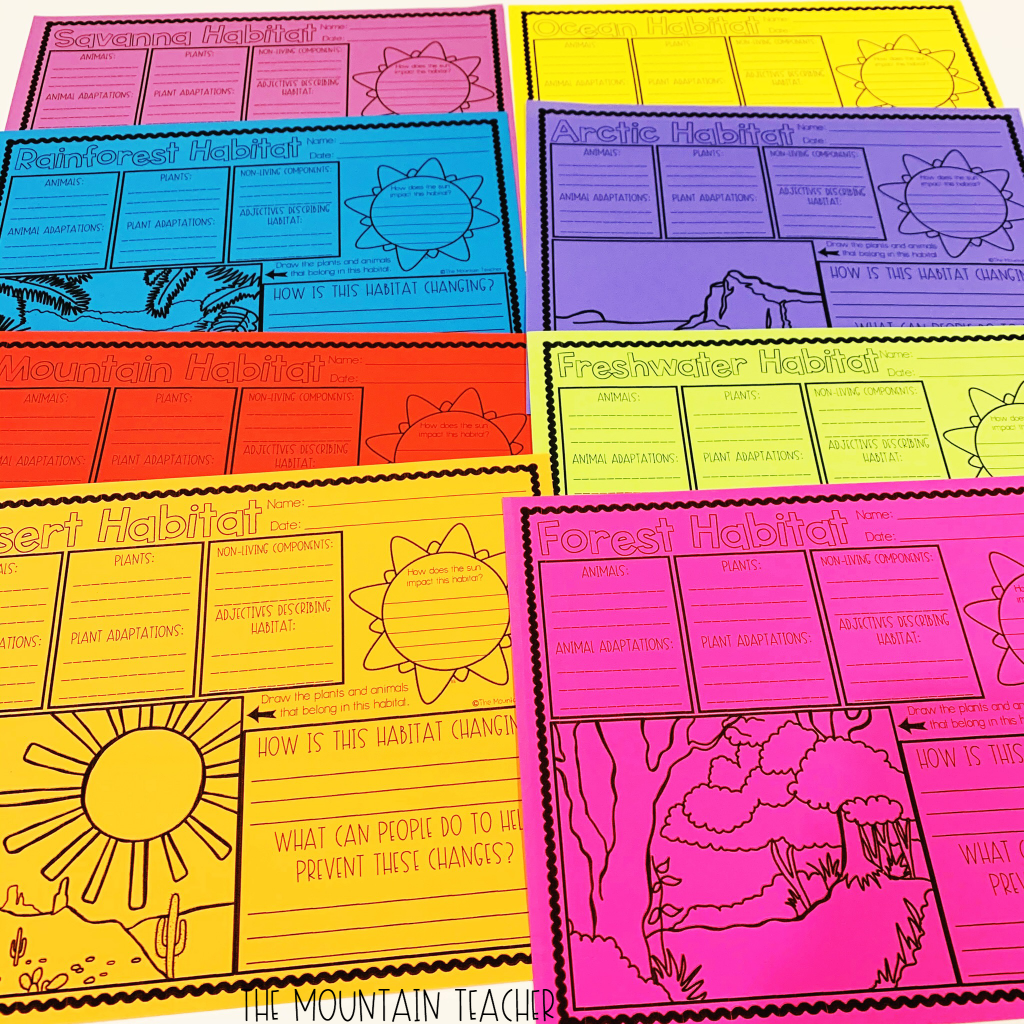
Week 3: What structures and behaviors help organisms meet their needs within a specific environment?
After learning about all of the different habitats, we zoom in even closer and look at the life cycle of plants and animals in specific habitats. We talk about how animals grow and change, food chains and life cycles. My favorite resources to use are on Epic, PebbleGo (paid) and BrainPopJr.



Week 4: Why would some organisms have a hard time surviving in a given environment?
Finally, we start talking specifically about animals and their adaptations to survive in an environment. I have students pick one habitat and 3-4 animals from that habitat to research. We draw diagrams, talk about specific food chains, life cycles, prey, predators and other important animal facts. My favorite free website for this research is the National Geographic Kids Website.


Finally, we go through various scenarios and see if students can identify if an animal would survive in a habitat other than it’s own, and why the animal could survive or why it would not survive. There is a fun, free activity to help reinforce this skill on the PBS Kids Website.

STEM, Digital, Project, or Writing Extensions:
As an extension, students can make a digital book on MyStory (free) or Book Creator (paid) to share with other students about their animals. Not a digital school? No problem! We also love to make diagram projects of our habitats out of shoe boxes. This can be done at school or home.




Still not your jam? I allow students to build their habitats out of STEM materials in the classroom. Another great extension is to tie in our favorite writing project, What if You Had Animal Adaptations? Students research various animals and the adaptations they have to survive, then pick which ones they want to have! Kiddos absolutely love this project.
Get What You Need:
Second Grade Life Science Unit (includes everything pictured above, except for the extension activities)
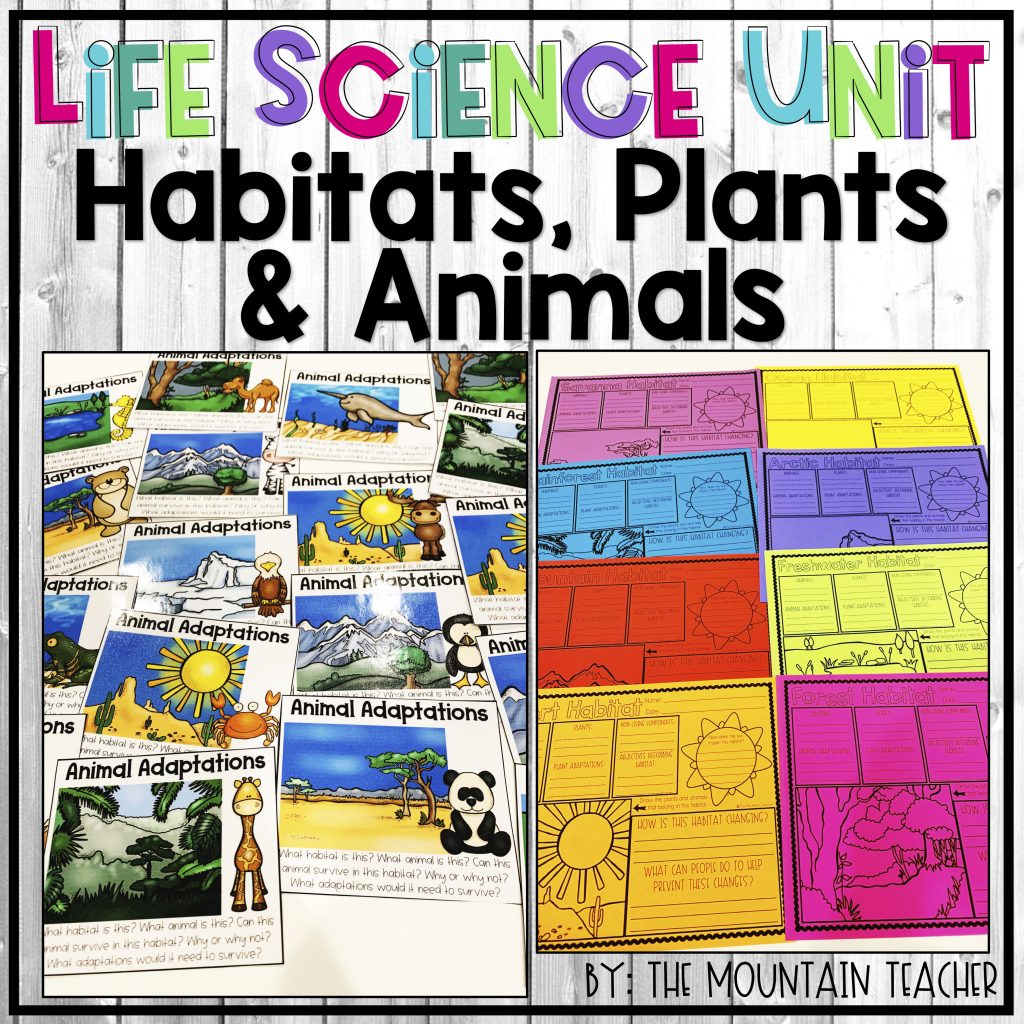
What If You Had Animal Adaptations? Writing Project

